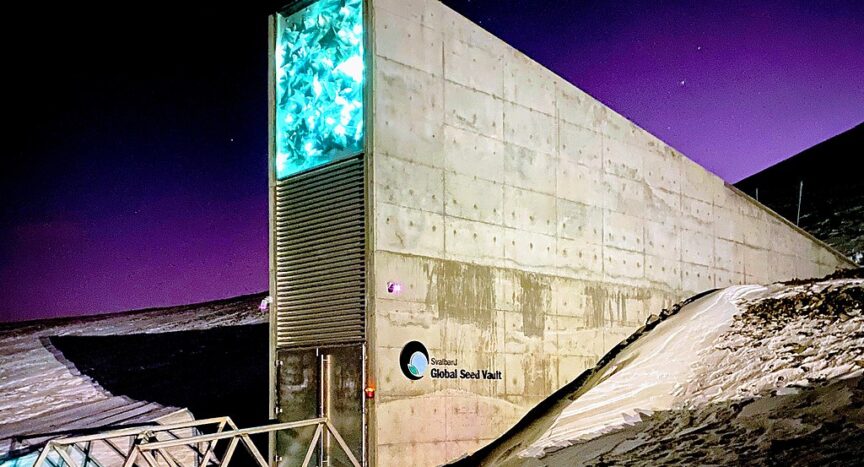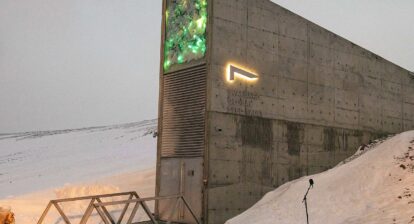Halfway between Norway and the North Pole, buried into the side of a mountain on a Norwegian archipelago is a treasury for humanity. A genetic seed repository built to prevent our agricultural downfall
There is a remote island halfway between Norway and the North Pole. The Svalbard Global Seed Vault, also known as the Doomsday Vault, is a secure seed bank located on this Norwegian island of Spitsbergen in the remote Arctic Svalbard archipelago. Its purpose is to safeguard the seeds of the world’s food plants in case of a global crisis. This particular location was chosen for its cold conditions and surrounding permafrost that would help preserve the seeds if the vault’s cooling systems failed. This important global storage facility houses over 10,000 years of our agricultural history.
The Doomsday Vault provides long-term storage for the duplicates of seeds from genebanks around the world. It secures the world’s food supply against the loss of seeds in genebanks due to mismanagement, accident, equipment failures, funding cuts, war, sabotage, it protects them against disease and natural disasters, and of course it also preserves them against climate change. The Vault is managed under terms spelled out in a tripartite agreement among the Norwegian government, the Crop Trust, and the Nordic Genetic Resource Center (NordGen).
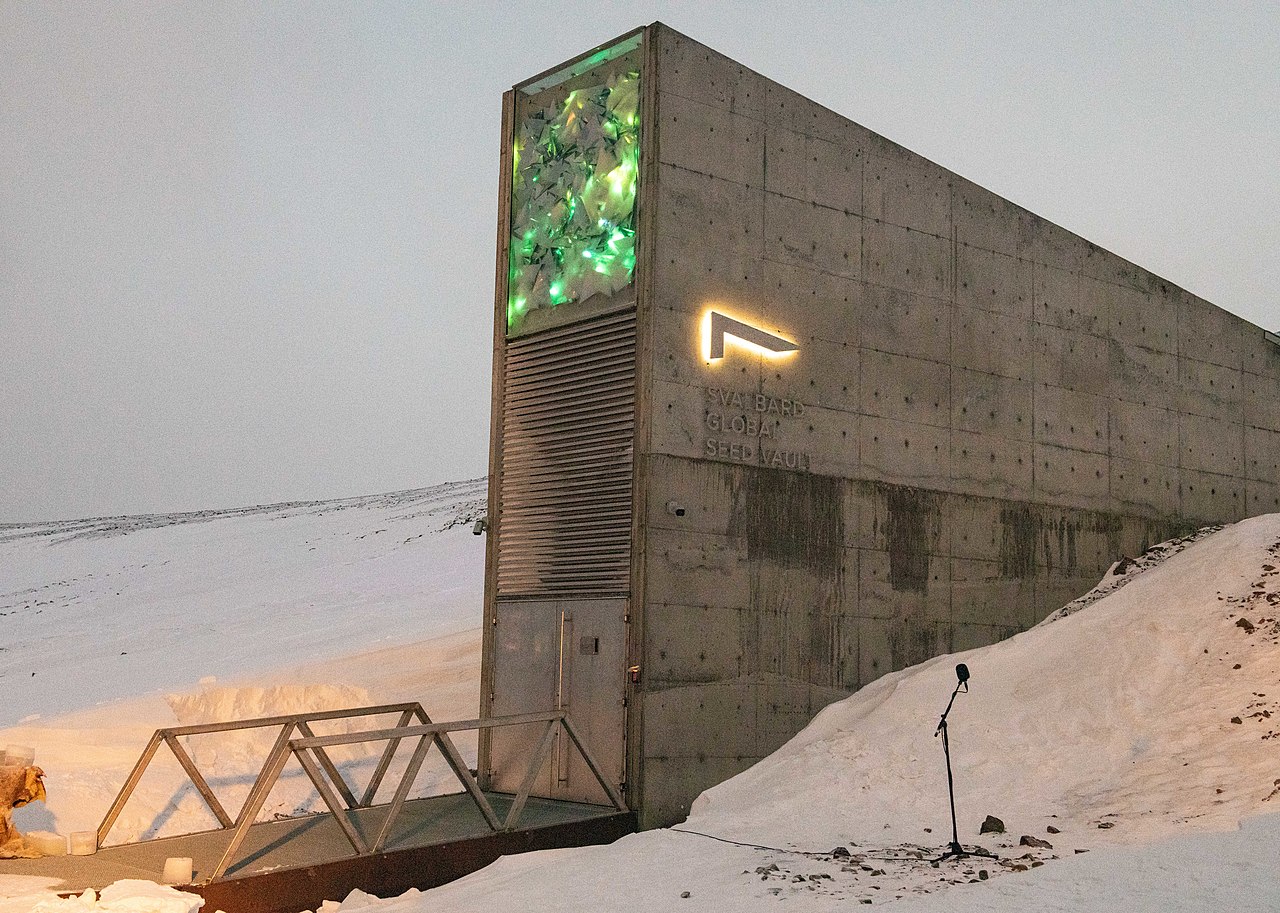
Entrance to the Svalbard Global Seed Vault in 2020. February 2020. Photo: Cierra Martin for Crop Trust
On June 19, 2006, Nordic leaders laid the foundation stone for the Svalbard Global Seed Vault to protect the seeds of all food we grow
This Global Seed Vault completed in 2008 at a cost of $9 million is funded by the Norwegian government and the Crop Trust and was endorsed by more than 100 countries. Located deep inside a sandstone mountain, it is designed to withstand even a global nuclear war. The Seed Vault is kept at a constant temperature of -18 degrees Celsius (-0.4 degrees Fahrenheit), which is ideal for long-term seed storage.
Over one million samples of seeds from all over the world
With the capacity to store up to 900 million seeds, it currently stores over one million samples of seeds from over 100,000 crop varieties from almost every country in the world. The seeds are stored in specially designed aluminum foil packets that are sealed and placed in boxes. The boxes are then placed on shelves in the Seed Vault.
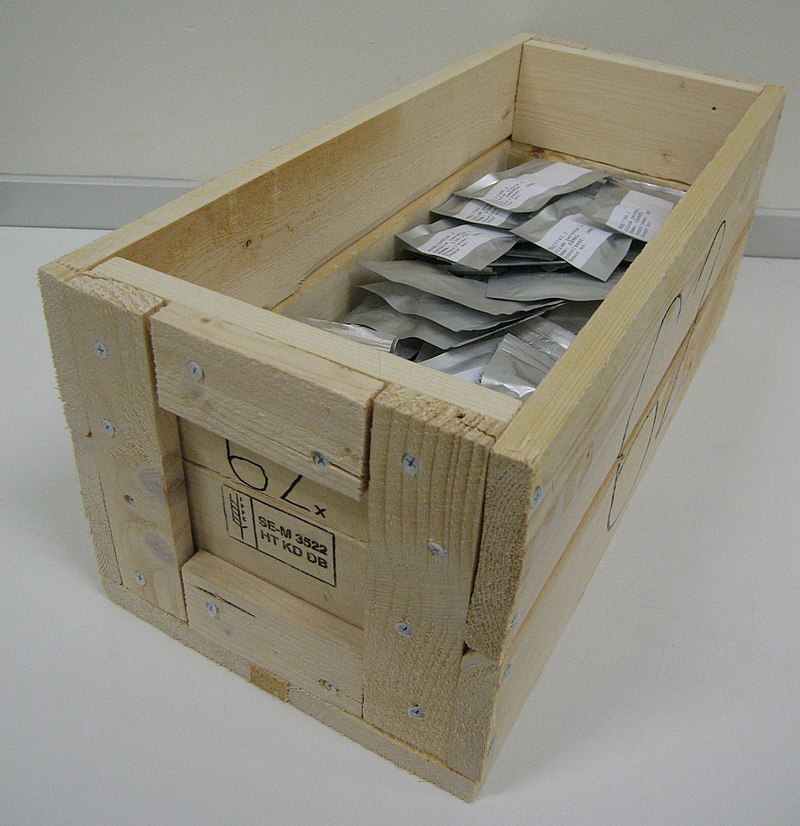
Storage box for the Nordic Gene Bank’s Svalbard Global Seed Bank. While glass tubes had been used to store seeds, since 2004 they have been packed in aluminium bags. This storage box is 23.5 x 22.5 x 50.0 cm (9.25 x 8.86 x 19.69 in; height x width x length).
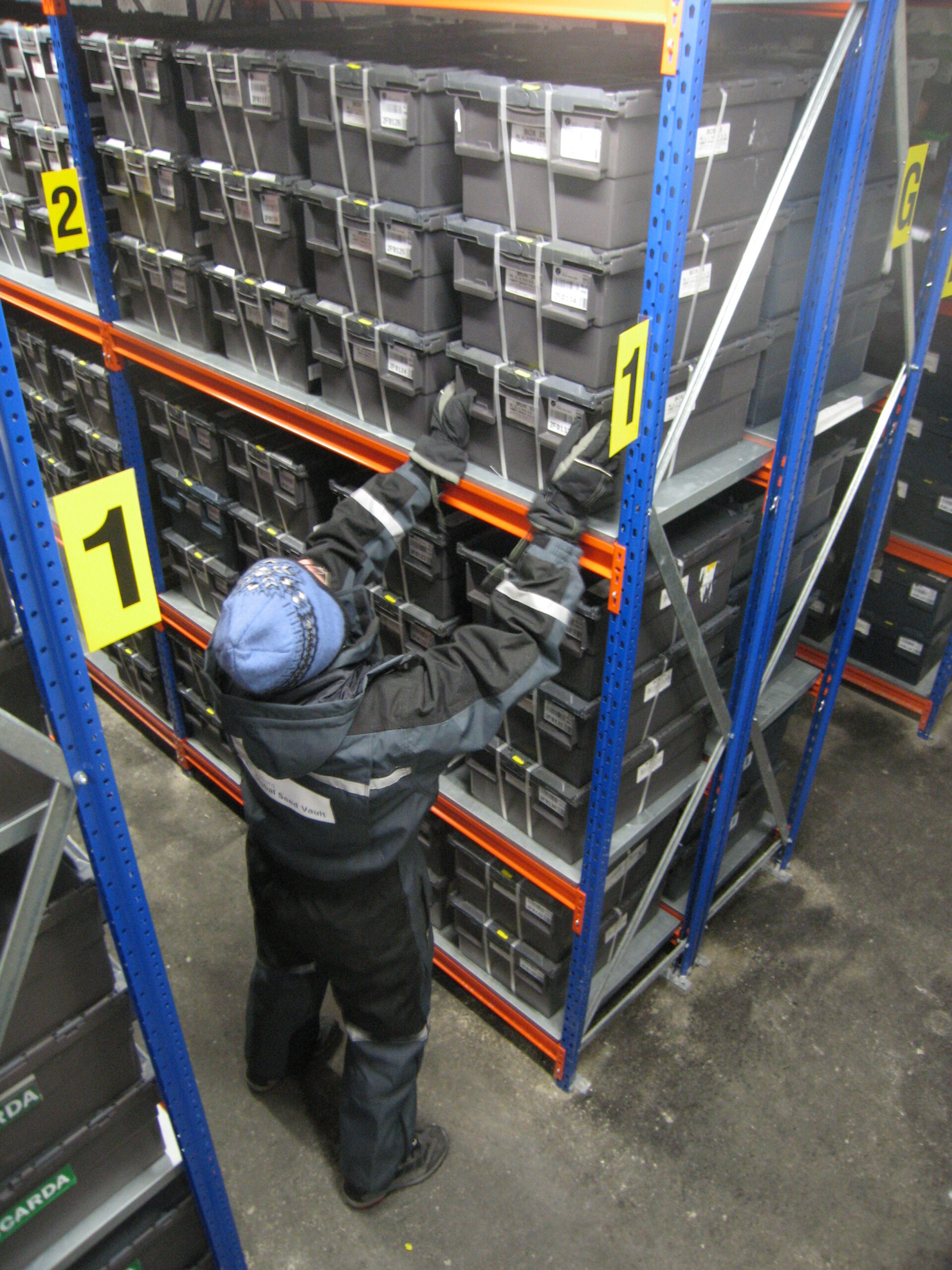
Seed storage containers on metal shelving inside the vault. CC BY
It is only opened when seeds are deposited or withdrawn. When seeds are deposited, they are first quarantined to prevent the introduction of pests or diseases. The seeds are then tested to ensure that they are viable. Once the seeds have been tested, they are stored in the Seed Vault.
When seeds are withdrawn, they are first germinated to ensure that they are still viable. The seeds are then sent to the genebank that deposited them.
Imporant back-up and preservations system
The Svalbard Seed Vault is a vital resource for the world’s food supply. It provides a safe and secure place to store seeds in the event of a global catastrophe and also helps to preserve the world’s agricultural biodiversity, which is essential for adapting to climate change and other challenges. Over the past few hundreds of years many varieties of edible plants have become extinct, therefore, the Svalbard Vault helps to safeguard and preserve genetic material of food seeds for any future contingencies.
For example, when the seed bank of the International Center for Agricultural Research in the Dry Areas in Aleppo was abandoned because of the war in Syria, it was restarted in 2015 using seeds from the Svalbard vault.
How does the Svalbard Global Seed Vault help humanity?
- It provides a safe and secure place to store seeds in the event of a global catastrophe.
- It helps to preserve the world’s agricultural biodiversity, which is essential for adapting to climate change and other challenges.
- It is a valuable resource for scientists who are working to develop new crop varieties that are more resistant to pests, diseases, and drought.
- It is a symbol of international cooperation and collaboration.
The Svalbard Global Seed Vault is a vital asset for the world’s food supply and agricultural biodiversity. It is a testament to the importance of preserving our planet’s genetic resources for future generations.
